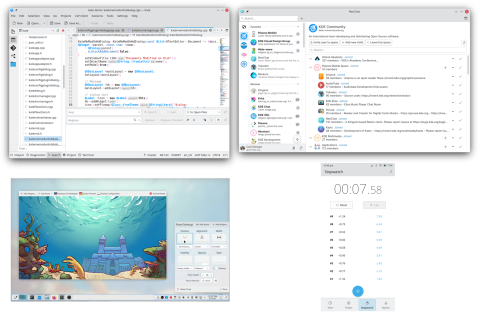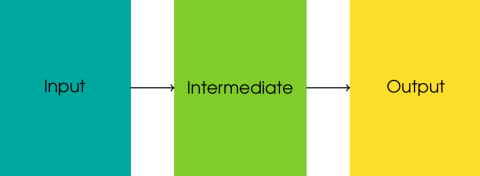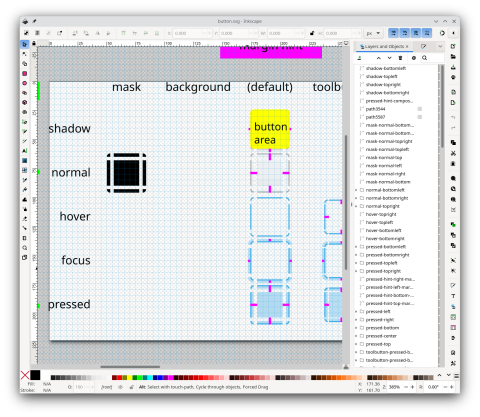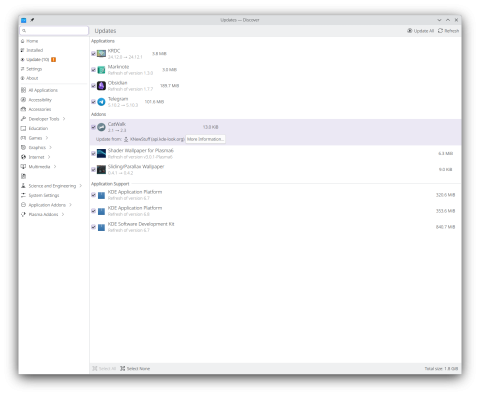Last year during Akademy I gave a talk called Union: The Future of Styling in KDE?!. In this talk I presented a problem: We currently have four ways of styling our applications. Not only that, but some of these approaches are quite hard to work with, especially for designers who lack programming skills. This all leads to it being incredibly hard to make changes to our application styling currently, which is not only a problem for something like the Plasma Next Initiative, but even smaller changes take a lot of effort.
This problem is not new; we already identified it several years ago. Unfortunately, it also is not easy to solve. Some of the reasons it got to this state are simply inertia. Some things like Plasma's SVG styling were developed as a way to improve styling in an era where a lot of the technologies we currently use did not exist yet. The solutions developed in those days have now existed for a pretty long time so we cannot suddenly drop them. Other reasons are more technical in nature, such as completely different rendering stacks.
Introducing Union
Those different rendering stacks are actually one of the core issues that makes this hard to solve. It means that we cannot simply use the same rendering code for everything, but have to come up with a tricky compatibility layer to make that work. This is what we currently do, and while it works, it means we need to maintain said compatibility layer. It also means we are not utilizing the rendering stack to its full potential.
However, there is another option, which is to take a step back and realise that we actually may not even want to share the rendering code, given that they are quite different. Instead, we need a description of what the element should look like, and then we can have specific rendering code that implements how to render that in the best way for a certain technology stack.
This idea is at the core of a project I called Union, which is a styling system intended to unify all our separate approaches into a single unified styling engine that can support all the different technologies we use for styling our applications.
Union consists of three parts: an input layer, an intermediate layer and an output layer. The input layer consists of plugins that can read and interpret some input file format containing a style description and turn it into a more abstract desciption of what to render. How to do that is defined by the middle intermediate layer, which is a library containing the description of the data model and a method of defining which elements to apply things to. Finally, the output layer consists of plugins that use the data from the intermediate layer and turn it into actual rendering commands, as needed for a specific rendering stack.
Implementing Things
This sounds nice on paper, but implementing it is easier said than done. For starters, everything depends on the intermediate layer being both flexible enough to handle varying use cases but at the same time rigid enough that it becomes hard to - intentionally or unintentionally - create dependencies between the input and output layers. Apart from that, replacing the entire styling stack is simply going to be a lot of work.
To allow us to focus more on the core we needed to break things down into more manageable parts. We chose to focus on the intermediate layer first, by using Plasma's SVG themes as an input format and a QtQuick Style as output. This means we are working with an input format that we already know how to deal with. It also means we have a clear picture of what the output should look like, as it should ultimately look just like how Plasma looks.
At this point, a lot of this work has now been done. While Union does not yet implement a full QtQuick style, it implements most of the basic controls to allow something such as Discover to run without looking completely alien. Focusing on the intermediate layer proved very useful, we encountered and managed to solve several pretty tricky technical issues that would have been even trickier if we did not know what things should look like.
Union Needs You!
All that said, there is still a lot to be done. For starters, to be an actual unified styling system for KDE we need a QtWidgets implementation. Some work on that has started, but it is going to be a lot harder than the QtQuick implementation. We also need a different input format. While Plasma's SVG styling works, it is not ideal for developing new styles with. I would personally like to investigate using CSS as input format as it has most of what we need while also being familiar to a lot of people. Unfortunately, finding a good CSS parser library turns out to be quite hard.
However, at this stage we are at a point where we have multiple tasks that can be done in parallel. This means it is now at a point where it would be great if we had more people developing code, as well as some initial testing and feedback on the systen. If you are interested in helping out, the code can be found at invent.kde.org/plasma/union. There is also a Matrix channel for more realtime disucssions.
Discuss this article on KDE Discuss.



